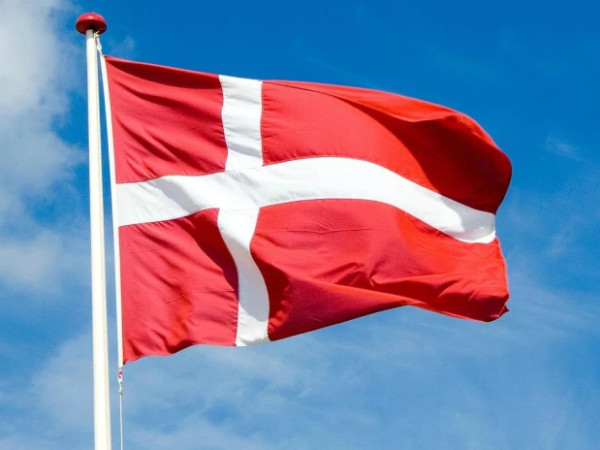The American Daily Beast publishes an article about the sea and mountain resorts of Georgia under the title "Georgia is an adventure paradise". Journalist Benjamin Kemper traveled to Georgia at the invitation of the National Tourism Administration. The article describes the adventure tourism of Georgia.
„For nearly a decade I’ve been visiting Georgia to report on everything from ancient winemaking traditions to blood-curdling ghost towns to the last truly wild place in Europe. But nothing prepared me for what I found when I started researching Georgian adventure travel: Here was a place where you could be jet-skiing in the Black Sea one day and heli-skiing down glaciated peaks the next—all in a country roughly the size of South Carolina. Georgia is one of Europe’s most intriguing outdoor destinations, and nobody seems to be talking about it.
But the thing about planning an outdoor adventure to Georgia—instead of one focused on, say, wine tasting or monastery hopping—is that seasonality is key. Many areas are snowbound and inaccessible for over half of the year, while others, like the watersport Eden of Batumi, are bleak and humdrum in the off season. Knowing when to go is half the story.
Over the last month, I’ve been watching the waterfall outside my window in Tbilisi go from trickle to torrent, splashing unsuspecting tourists with ice-cold water. This time of year, snowmelt from the high Caucasus sends water rushing down rocky rivulets into the lowlands—making for terrific kayaking and whitewater rafting. I learned this firsthand at Jomadia Rafting Camp in south central Georgia, where you can show up, no booking required, and within minutes be tumbling down rapids on a six-person boat with a guide at the helm. (Bonus: The camp is situated on the way to the fairytale cave city of Vardzia.) The experience was thrilling enough to get my adrenaline pumping but still felt totally safe, even though I was a newbie.
Georgia’s Caucasus mountains have also been drawing an ever-growing number of canyoning enthusiasts, who call on CIC-certified guides like Giorgi Enukidze of Georgian Canyoning to rappel down fast-flowing streams and waterfalls in the bowels of valleys in northwestern Georgia like Tkhopra, Dzmuisi, and Sopo. And unlike similar canyons in the U.S. and Europe, in Georgia you seldom cross paths with other hikers and canyoneers.
RVing is best in summer, when you’re less likely to get rained on or stuck in the mud. But Georgia has lots going on for those who actually want to get wet. In the subtropical Black Sea city of Batumi, near the Turkish border, it’s impossible to walk down the four-mile-long boardwalk without getting accosted by buff dudes renting water scooters, wakeboards, paddle boards, and parasailing excursions—all great ways to take in sweeping views of the port’s rock beaches and flamboyant, Vegas-like skyline.
Yet of all Georgia’s outdoor attractions, the most popular is trekking. After all, the country is home to four of Europe’s eight highest mountains. Three of those (Ushba, Tetnuldi, and Shkhara) are found in the northwestern region of Svaneti, known for one of the world’s most scenic hikes, from Mestia to Ushguli. The four-day, 36-mile route winds between turquoise lakes and lost-in-time villages and ends at a UNESCO-protected medieval enclave believed to be the highest continuously inhabited settlement in Europe. Happily there’s no need to pack a tent—the move here is to crash at rustic guest houses where you’ll refuel nightly with hearty local dishes like kubdari (meat-filled flatbread redolent of fenugreek and mountain thyme) and chvishtari (cheesy fried corn cakes). Svaneti is buried under snow in winter and muddy in the spring, so summer (or early autumn) is the optimal time to visit.
Every fall, Georgia plays host to one of nature’s most awe-inspiring spectacles: the autumn bird migration from Europe to Africa. Millions of birds—storks, raptors, flamingos, warblers, swallows, flycatchers, and more—make a temporary home in the Caucasus from (roughly) August to October as they move to warmer climes in search of food and safe breeding grounds. And yet, not only is the bird-watching community in Georgia relatively small; all but the most avid switchers are unaware of the country’s avian riches.
But birds aren’t the only animals migrating in Georgia come autumn: October also marks the annual transhumance of horses in Tusheti. Tusheti is a protected nature reserve and one of the remotest corners of Europe—it takes several hours of off-road driving to get there, a journey the BBC once called one of the most dangerous in the world. But those who visit are rewarded with stuck-in-time stone villages inhabited by rugged, welcoming locals who practice pagan-influenced Christianity and speak an ancient dialect of Georgian.
At Zermatt in Switzerland, a one-day ski pass costs around $100. At Gudauri, Georgia’s most popular ski resort, that ticket will set you back a mere $27. The math doesn’t lie—even when you account for the difference in airfare, Georgia beats the Alps almost every time when it comes to affordable ski vacations. And I don’t know about your après-ski preferences, but I’ll take gooey khachapuri, lavash-swaddled kebabs, and slurpable soup dumplings any day over potatoes and fondue»- Benjamin Kemper writes .


















